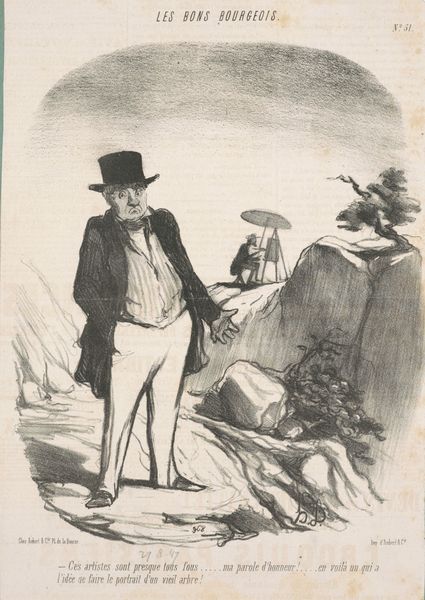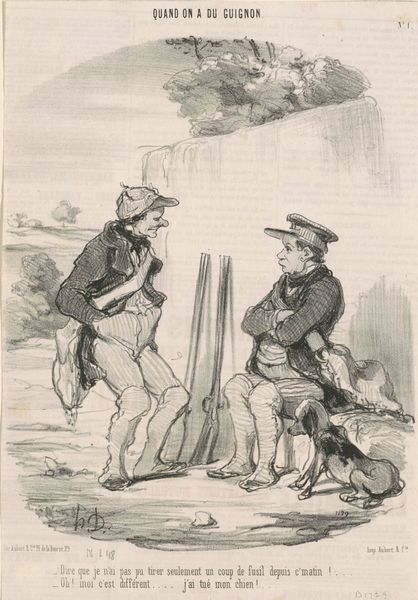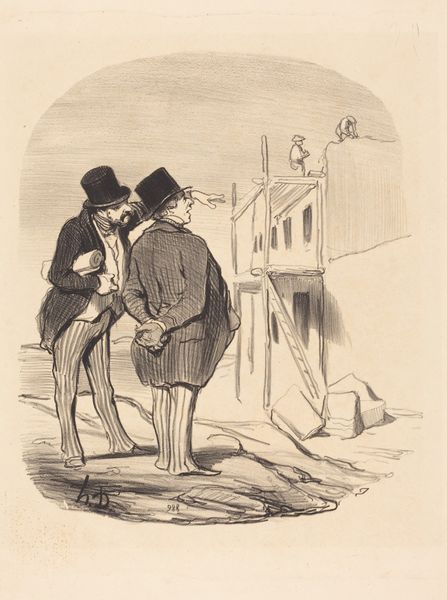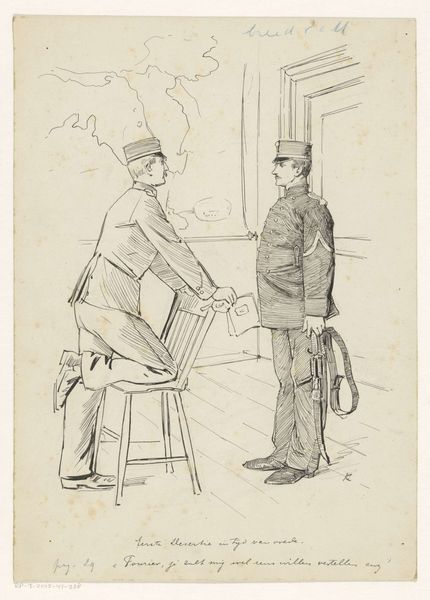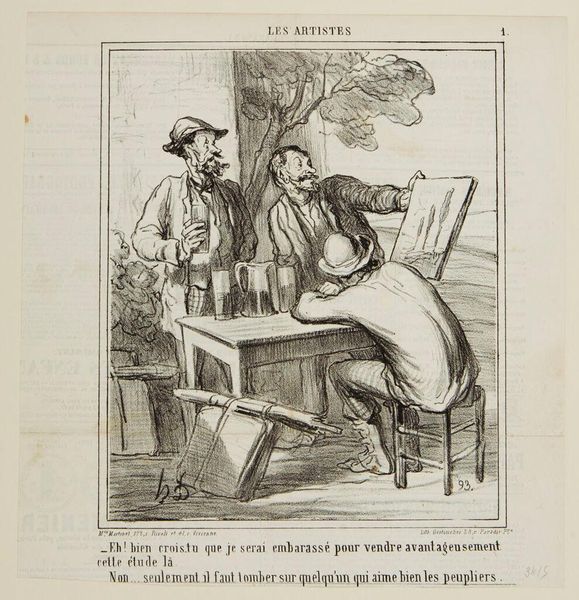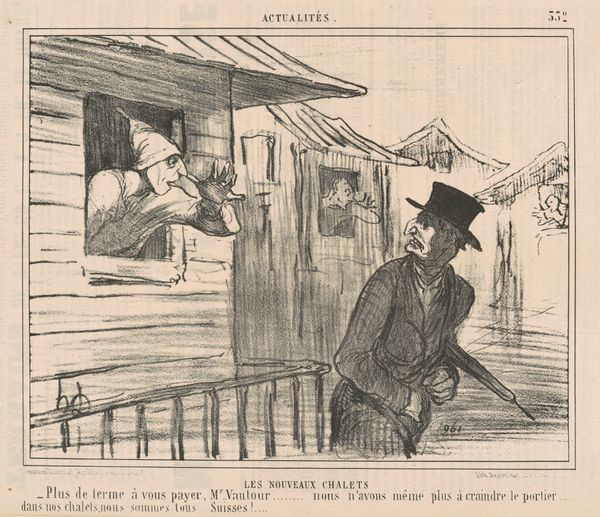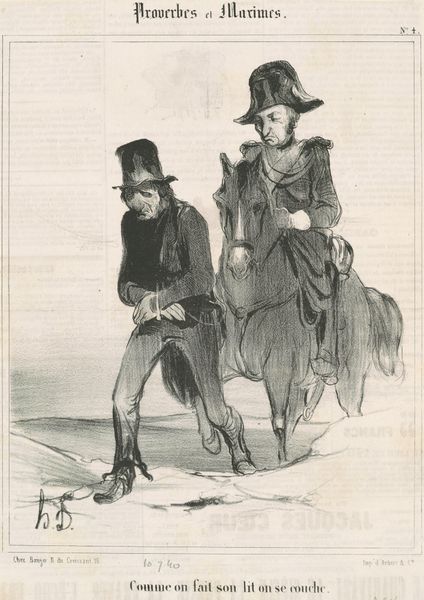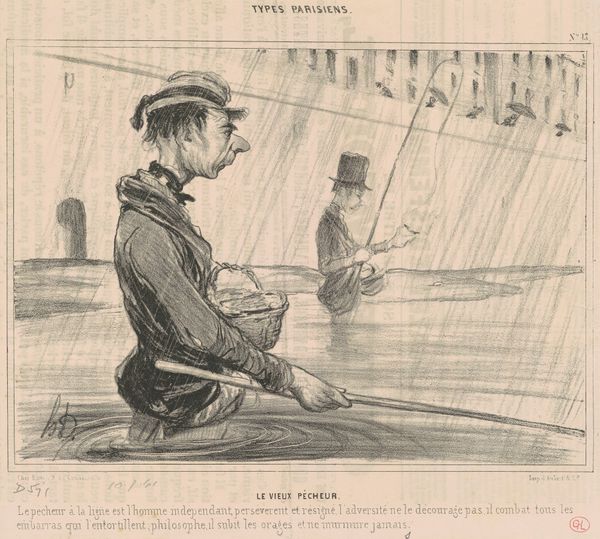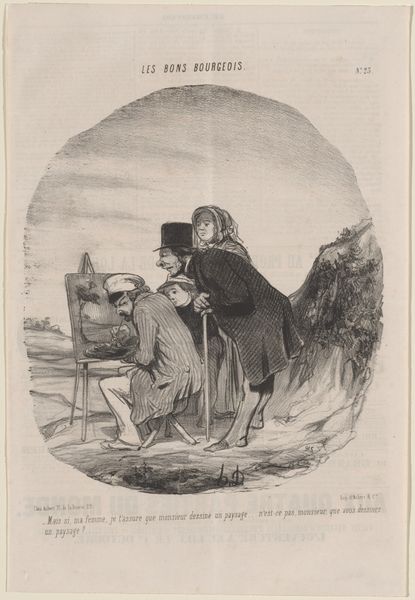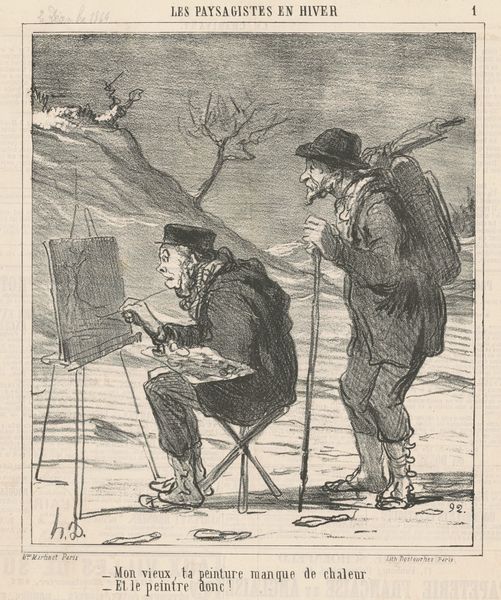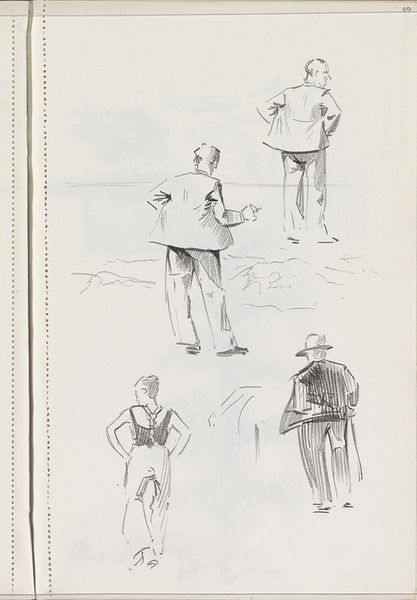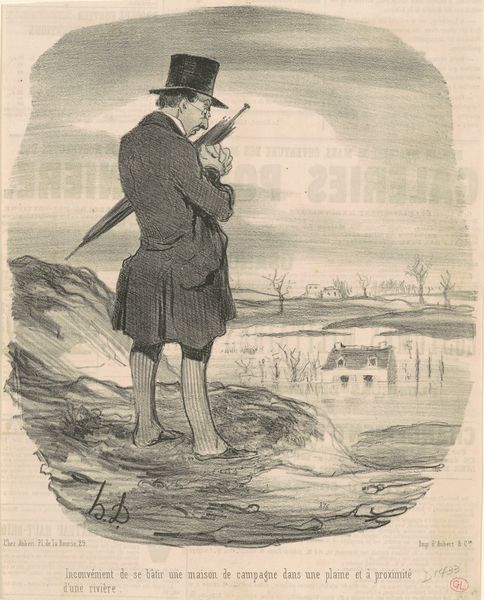
drawing, lithograph, print
#
drawing
#
comic strip sketch
#
quirky sketch
#
lithograph
# print
#
caricature
#
old engraving style
#
sketch book
#
landscape
#
personal sketchbook
#
idea generation sketch
#
sketchwork
#
romanticism
#
sketchbook drawing
#
genre-painting
#
storyboard and sketchbook work
#
sketchbook art
#
realism
Copyright: National Gallery of Art: CC0 1.0
This lithograph, "Les paysagistes," was made by Honoré Daumier sometime in the mid-19th century. Lithography is a printmaking process using a flat stone or metal plate, drawn on with a greasy substance. The surface is then treated so that the ink adheres only to the drawn areas. Daumier was a master of this medium, using it for social and political commentary, published in newspapers. Here, he satirizes landscape painters, one copying nature, and the other copying the first painter. Look closely: you can see the way that lithography renders textures and gradations, all from simple marks on a stone. The seemingly endless capacity for mechanical reproduction, of which lithography is an early example, transformed the art world, influencing what was made, and how it was consumed. Daumier’s print is a reminder that materials, making, and social context are crucial to understanding art.
Comments
No comments
Be the first to comment and join the conversation on the ultimate creative platform.

